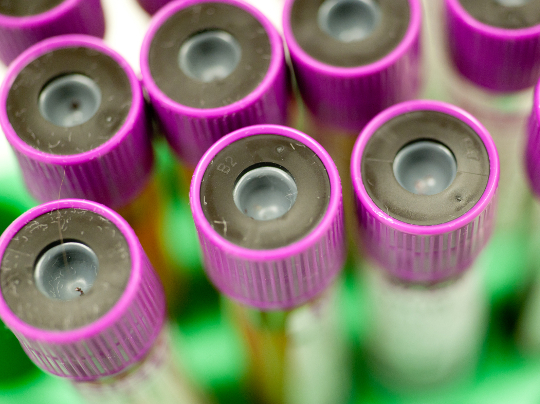A major study published today in the journal Nature has given a new insight into how DNA is repaired – a fundamentally important process in all forms of life and diseases including cancer.
Scientists from the Division of Structural Biology at The Institute of Cancer Research, London, carried out a series of experiments to study proteins involved at a crucial stage in a process called homologous recombination, which is used by cells to repair breaks in DNA. The project was funded by Cancer Research UK.
DNA breaks, which disrupt genes and cause them to move to other chromosomes, are a cause of cancer and consequently cells need to have effective ways of repairing them.
The researchers studied DNA recombination in bacteria, which are relatively easier to study than humans but share a very similar system for the repair of DNA breaks. The research focussed on the process leading up to the recruitment to DNA of a protein called RecA, which is essential for high fidelity DNA repair. In bacteria, broken DNA ends are processed by a multi-protein complex called AddAB/RecBCD, which trims off the DNA at the broken ends and prepares it for loading of the RecA protein. The study used a technique called X-ray crystallography to visualise the molecular structure of the proteins. The researchers initially revealed how the protein complex processes the broken DNA ends to unwind DNA, prior to trimming it off in preparation for loading of RecA.
The study went on to show that the recruitment of RecA is initiated after a rearrangement in the structure of AddAB/RecBCD, caused by the complex encountering a distinctive DNA sequence called Chi. The rearrangement, which the researchers were able to visualise directly, pauses the complex as it shuttles along a DNA strand. The complex then recruits RecA to help complete the repair process.
Although RecA is not involved in DNA repair in human cells, a closely related protein called Rad51 does the same job after the DNA break has been processed in a similar manner.
Study leader Professor Dale Wigley, Head of the Division of Structural Biology at The Institute of Cancer Research, London, said:
“We were excited to uncover how an important part of the DNA repair system is controlled, ultimately by a reconfiguration in the shape of a protein that we were able to visualise using X-ray crystallography. Although our work was in bacteria, our findings have wider implications for understanding cancer because a very similar mechanism for the repair of DNA breaks is used in human cells.”
“Broadly speaking, there are two different processes for DNA break repair in human cells – high fidelity homologous recombination, and a less precise system called non-homologous end joining. Homologous recombination is more exact, produces less errors, and is particularly important just before cells divide, because if errors caused by DNA breaks are passed on to a daughter cell they can lead to cancer.”
Researchers in our Division of Structural Biology are giving us an insight into some of the most fundamental processes that cause cancer. Recently they discovered a whole new family of proteins in bacteria and found the first ‘helix of a helix’ protein structure in nature.
